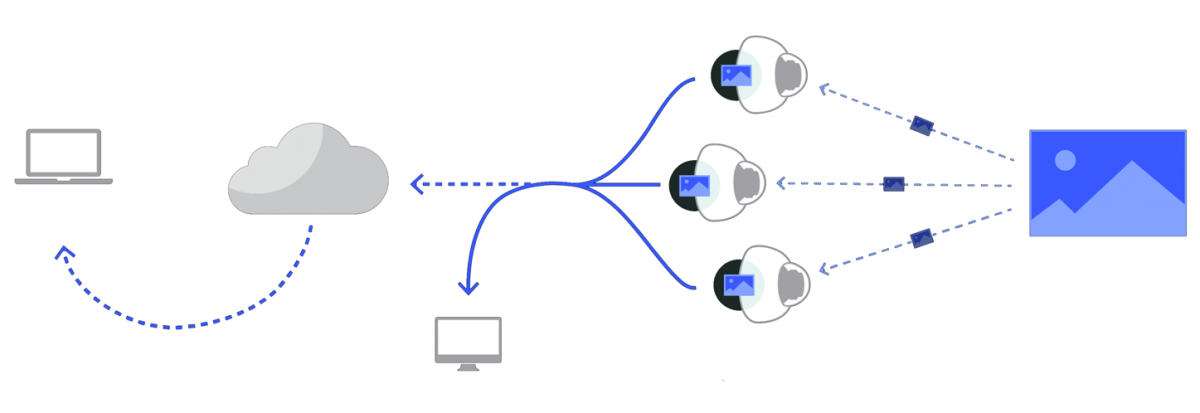How to Have a Great Internet Connection for Virtual Martial Arts and Qigong Classes
A great Internet connection is absolutely necessary for Virtual Classes to ensure video quality, video smoothness, and audio quality. However, technology is so complicated these days and it’s easy to encounter problems or get tricked. We hope this guide will help you to understand the Internet service you need and how to optimize the Internet to your computer, tablet, or phone.
The Video You See of Yourself is Likely Different...
The video that you see of yourself is coming directly from the webcam, so the video will always look smooth regardless of your Internet connection. Your video still has to transmit to your local network and router, and then through the Internet and reach the teacher or students. If there are any issues, your video will look choppy without you even knowing.
This is why it’s important to ensure there are no hiccups on your end and ensure you have a good Internet setup.
Fast Internet Service Provider
Choosing a good Internet Service Provider isn’t that simple. Here we’ll explore the number of options you will need to consider.
Connection Type
This will depend on the network infrastructure available to your area. In order of preference, you will want: 1) Fibre, 2) DSL or Cable, 3) Cell Phone Internet.
Fibre optics is the fastest type of Internet connection but it’s not available everywhere. On top of that, you’ll have major Internet providers claiming you are getting Fibre Internet service but then only give you a cable or telephone connection (which is still faster and more stable than Internet delivered through telephone poles). Ideally you’ll want a direct Fibre hookup from the street right to your home. You’ll know you are getting this if you have Modem/Router designed specifically for Fibre and will have a special Fibre Optics port.
DSL is generally faster than Cable because it is generally not shared with other homes. Cable Internet is notorious for having a shared Internet bandwidth with hundreds of other users, which means if there are a lot of people downloading and watching videos at the same time then your Internet will suffer. Having said that, there are a lot of DSL providers that are also shared. It’s best to ask your chosen provider to clarify this.
On the other hand, DSL bandwidths are often limited because it relies on the quality of the telephone lines. In many older areas, the telephone lines are degrading and you may only get a fraction of the promised bandwidth and still have to pay full price.
Cable has higher bandwidth potential than DSL so if you are lucky to be in an area with fewer people using the Internet then you can potentially reach much higher speeds than DSL. One advantage of Cable over DSL is the stability of the connection.
Most cellular networks provide Internet services and 4G is one of the latest and fastest available in Canada. There are even faster technologies coming so watch out for those! Using the Internet through 4G for streaming is really not ideal and highly discouraged. There are usually data limits and it gets very expensive for additional data usage. Even if you have an ‘unlimited data’ plan, the cellular network will limit your speed once you hit a certain amount of bandwidth usage. This is usually hidden in some small text or hard to read area of your contract. Having said that, it could be fun if you wanted to have a Virtual Class from a park.
Internet Service Type and Speed
Another major factor to consider for your Internet is the type of service. Many providers advertise high download speeds but it’s the upload speed that you need to shop for. Your Internet Bandwidth includes both download and upload speed and may be limited by factors such as a poor line quality and shared usage.
Internet speed is measured in megabits per second (Mbps). Generally anything higher than 5 Mbps is sufficient for watching live stream HD video but you’ll need a minimum of 5 Mbps if you want your own video to be streamed in HD quality to others. This is where the pricing in the packages really differ. Contact your chosen provider to clarify your existing package and get a better ‘upstream’ service.
Keep in mind that if you want to watch 4K videos or stream in 4K, you’ll need 25 Mbps download and upload!
Shared Internet Adjustment
If your Internet is shared amongst other household members, you’ll want to err on the side of more Internet Bandwidth. Otherwise you’re going to have to negotiate Internet usage to avoid streaming video quality problems.
Network Connection and the Router/Modem/Hub
One of the hardest things to understand even for techies is how the whole Internet connection works between you, your device, your Internet service provider, and your host (or students). We’ll loosely call this entire link the Network Infrastructure.
How Does the Network Infrastructure All Work?
The main thing you need to know is that your device accesses the Internet from another computer called a Router or Internet Modem. That Internet Modem is responsible for exchanging data to and from your Internet Provider.
Your Internet Provider then talks to another Internet Provider which then connects you to the host or students, all through an Information Highway that is usually built with Fibre Optic cables. This Information Highway is connected all over the world through Servers and yet even more Fibre Optic cables (and where no Fibre Optics are available yet, it extends through telephone wires and television cables).
As you can see, there are many things that can go wrong and cause a disruption to your Virtual Class.
At our downtown Toronto STQI school, we were using DSL service which promised 10Mps download and 6 Mps upload. In reality we were getting 6 Mps download and only 2 Mps upload. When we asked the Internet Provider to investigate, they discovered the telephone wires from their network hub to our building were degenerating, causing instability and crashing our Internet Modem. The usable bandwidth of the telephone wires were greatly reduced, and as the lines continued to degenerate, the speeds continued to drop. Finally we found another Internet Provider that had a solid Fibre Optic connection to the terminal outside our building. From there they ran a telephone wire to our Internet Modem. We didn’t get the full Fibre Optic speeds but it was stable and we were still able to get 25Mps download and upload speeds.
Wi-fi vs Ethernet
Wi-fi is a convenient way to connect to your Internet Modem but there are many inherent problems.
For example, If you are using wi-fi, the placement of your Internet Modem or Router is important. Ideally it is placed within plain sight so you can get the best signal. If there are many walls in between or it is on another floor, then the signal strength will be much weaker and therefore limit your Internet speed. There may even be interference from other electrical devices and appliances.
You can get a Wi-fi extender and strategically place them to extend your coverage and signal strength. However, these are not always easy to set up and sometimes there are incompatibility problems.
Wi-fi is also limited in its bandwidth. It can’t nearly transmit as much data as that through an Ethernet cable. If you have your TV hooked up to Netflix and are watching 4K video, you’ll find that some areas of your video are not very sharp. That’s because your TV cannot get all the streamed data in time.
Therefore we highly recommend you connect through an Ethernet cable. This is usually not possible on tablets and phones. There are some third-party tools you can find that may allow you to hook up to an Ethernet cable but for all the troubles you might as well just use a laptop or a desktop computer.
Internet Modem or Router
If you have a fast Internet service, make sure the Internet Modem you are using is compatible and configured properly. Your Internet Provider will be able to tell which modems are supported for the optimal configuration and speeds.








 Written by Master Dao on Wednesday, December 23, 2020
Written by Master Dao on Wednesday, December 23, 2020





 YouTube
YouTube Instagram
Instagram Facebook
Facebook Discord
Discord